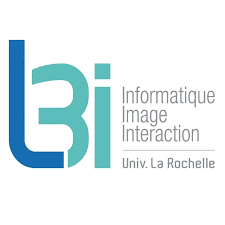
Jean-Christophe Burie
Research Units

Laboratory of Informatics Image Interaction
Research Teams
Images and Content
Disciplines, scientific fields, research areas
-
Mathematics & Information Sciences
-
Computer and information sciences
- Computer graphics, computer vision, multimedia, computer games
- Machine learning and data processing
- Web and information systems, database systems, information retrieval and digital libraries, data fusion
-
Computer and information sciences
Bio
Jean-Christophe Burie is a Full Professor in Computer Science at the L3i (Laboratory in Computer Science, Image and Interaction) of La Rochelle University. He received his Ph.D. degree in automatic control engineering and industrial data processing from University of Lille, France, in 1995. He was a research fellow in the Department of Mechanical Engineering for Computer-Controlled Machinery, Osaka University, Japan from 1995 to 1997 in the framework of the Lavoisier Program of the French Foreign Office. He is currently deputy director of the L3i Laboratory. He is also Chair of the governing board of the Technical Committee 10 (Graphic Recognition) of the International Association for Pattern Recognition (IAPR). Since 2016, he is vice-president of La Rochelle University in charge of the digital transformation and he is managing different projects for the university.
In the framework of the Eu-Conexus, he was leader of the work package 7 "Smart Campus" from 2019 to 2022.
Degrees
- 2013, HABILITATION A DIRIGER DES RECHERCHES (DIPLOMA TO BE ABLE TO SUPERVISE PHD STUDENT)
« From pixel to interpretation, Models and Tools for the color image processing and analysis », La Rochelle University, France.
- 1995, PhD IN INDUSTRIAL AUTOMATION : AUTOMATIC CONTROL AND INDUSTRIAL DATA PROCESSING, University of Lille 1, France.
- 1992, DEA INDUSTRIAL AUTOMATION : AUTOMATIC CONTROL AND INDUSTRIAL DATA PROCESSING (DEA : DIPLOME ETUDE APPROFONDI equivalent to MASTER 2 today)
University of Lille 1, France.
News about me & my work
Fields of research :
computer vision, image processing and analysing, document analysis and pattern recognition.
Research topics :
Methods of AI for pattern recognition. Application to underwater image analysis, cultural heritage document segmentation, administrative document analysis, ancient text recognition, signature extraction, Comics album indexing, analysis of hetegeroneous documents
- Chair of the technical committee 10 on GRAPHIC RECOGNITION
of IAPR (International Association for Pattern Recognition), from 2018.
- International collaboration
University of Osaka, Japan – Academy of Sciences of Beijing, China – Universitas Padjadjaran, Bandung Indonesia –Universitas Pendidikan Ganesha, Singaraja, Indonesia – University of Sciences and Technology of Hanoi, Vietnam – University of Sfax, Tunisia
Projects
SAIL : Sequential Art Image Laboratory
The objective is to develop inovative tools from comics album analysis.
CHAMDOC
Thanks to the close collaboration between researchers in SHS and IT, it is now possible to reverse this fatality and propose a project on the automatic recognition and analysis of Cham characters and Cham words in two types of documents: inscriptions and manuscripts. In order to avoid the disappearance of these alpha syllabic writings, the CHAMDOC project aims to develop methods of image processing, analysis and recognition, based on artificial intelligence techniques, to allow automatic reading of sources (inscriptions in Ancient Cham and Sanskrit until the 17th century, Middle Cham manuscripts from the Royal Archives of Panduranga between 1702 and 1850), then their indexation for wider use.
The CHAMDOC project is a multidisciplinary, unique and innovative project. Its overall objective is the design and development of innovative digital methods and tools for extracting and analysing characters from old written documents. More specifically, four objectives will be pursued:
- the collection, analysis and indexing of documents written in Ancient and Middle Cham;
- the development of image processing and pattern recognition methods based on artificial intelligence techniques to analyse the structure and content of Cham inscription and manuscript images;
- indexing of content to allow the creation and use of semantic links between documentary sources;
- the permanent safeguarding and enhancement of a unique cultural heritage.
The project partners are computer research groups specialized in automatic content extraction (L3i and MICA) and SHS research on Cham (CASE and LSS). Together, they want to bring the written Cham heritage into the digital age and give a new impetus to this documentation. The project is positioned in the field of digital humanities, combining SHS and Computer Sciences. It is part of the scientific axis "Culture, creations, heritage". It aims to preserve the history and cultural heritage of the Cham people in Vietnam.
Trivia about me